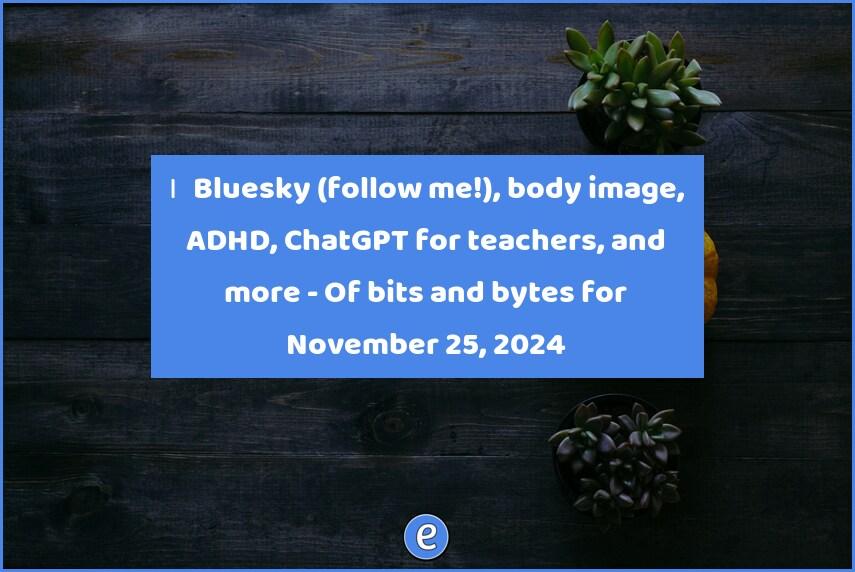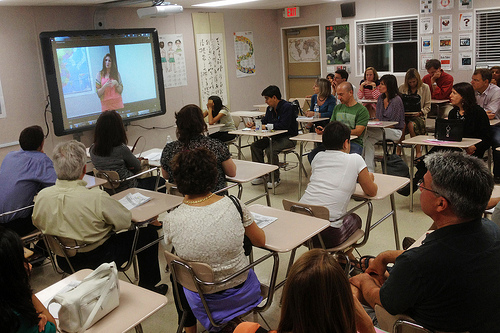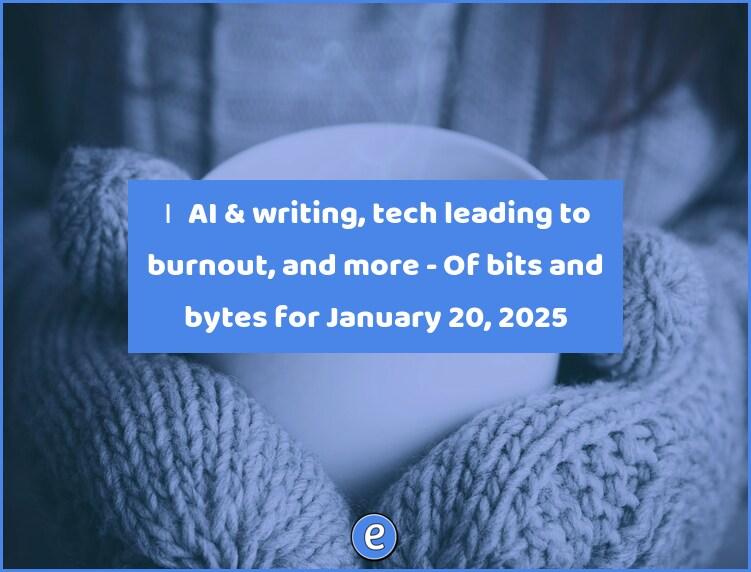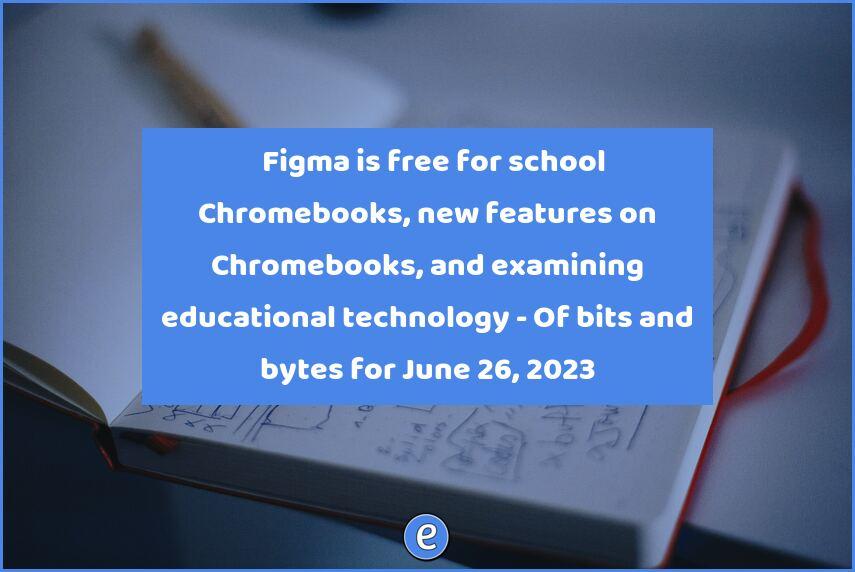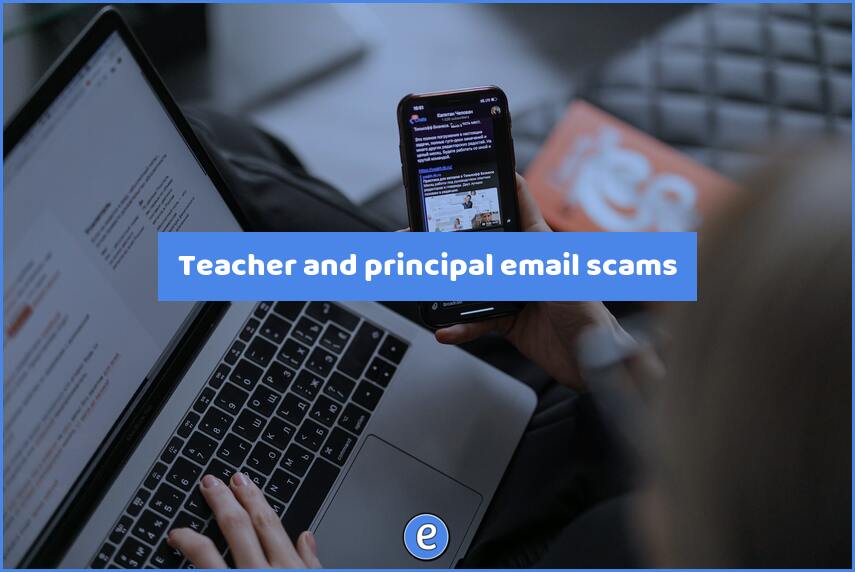🦃 Bluesky (follow me!), body image, ADHD, ChatGPT for teachers, and more – Of bits and bytes for November 25, 2024
Internet Travels
Of bits and bytes is my weekly round up of interesting links and ideas I discovered on the internet. It is published on Mondays for the previous week
Bluesky is having its moment
Bluesky, the decentralized microblogging platform that mimics Twitter (X) is having quite a moment this past week. I’m dipping my toes into it, and I already like its verification feature. Verification is all about proving you own your domain name and as such, I can be found on Bluesky at @eduk8.me.
To help you get started with Bluesky, I’ve come across a couple of tools:
- The Ultimate Directory for Bluesky is a curated collection of a variety of tools and starter packs. The tools, like the Bluesky Feed Creator and Sky Follower Bridge, help users navigate their social media experience. The directory helps users connect with like-minded communities and block unwanted content.
- The Bluesky network analyser provides users with a snapshot of their Bluesky network. It can show who your followers follow, along with who the people you follow follow. That’s a lot of follows… If you sign into the tool you have one click access to follow others. HOWEVER, don’t sign in with your Bluesky password. Go to your Profile on Bluesky and create an app password and use it instead.
Learn21 is a proud sponsor of Eduk8me and the Of Bits and Bytes newsletter. Read more about their mission at Learn21.
Apps
Google has rolled out a new feature called Gemini in Google Docs, allowing you to create unique images directly within your documents. This tool aims to boost your creativity and make your documents more engaging without leaving the comfort of your editing space. The tool is not available to everyone, and is available for Google Workspace users that have the following add-ons:
– Gemini Business
– Gemini Enterprise
– Gemini Education
– Gemini Education Premium
– Google One AI Premium
Pedagogy
Researchers have found that body image plays a role in how well we pick up motor skills. A study by the University of Toronto found that people who felt embarrassed about their bodies performed worse in movement tasks, especially men, compared to those who felt proud. This research suggests creating supportive and body-positive environments could improve performance and participation, not just in sports but possibly in academics as well.
Online programming environments are popular in teaching computer science, but they might not be doing our students any favors when it comes to preparing them for university. Many professors are noticing that students lack basic skills like managing file directories or using installed software, thanks to the usage of online IDEs that hide these complexities from the users. It seems that our reliance on these online tools may be more of a crutch than a ladder, especially given that universities expect students to be able to use tools like Eclipse or Visual Studio.
The increase of AI writing code might sound like the beginning of the end for teaching programming, but it is still a little to much of a novice when it comes to reliable coding. Developers are finding more use for their debugging skills than ever when wrestling with AI-generated code.
Three enlightening “aha” moments in a week of learning. First, the importance of language is highlighted by switching from “planned ignoring” to “giving space,” showing how positivity in language can make a difference. Second, using visuals benefits everyone, not just students with autism, as seen in the introduction of lanyards with communication visuals. Lastly, adults also rely on visuals, such as lists and daybooks, emphasizing the continued need for supportive tools throughout life.
Technology
A scandal involving AI-generated explicit images led to the shutdown of a Pennsylvania private school after a student created deepfakes of nearly 50 female classmates. Parents, outraged by the school’s failure to report these images as mandated, demanded resignations or faced legal action, which successfully led to the Head of School and the school board president resigning.
Tips
OpenAI, in collaboration with Common Sense Media, has launched a free online course to help K-12 teachers integrate ChatGPT into their classrooms, with topics covering AI basics and pedagogy. While the course has been positively received in several schools some educators are concerned about the ethical implications and limitations of using AI in education, including issues related to privacy, data use, and control over content. Critics argue that the course appears to normalize AI use without fully addressing its potential drawbacks, like misinformation and bias.
Pop Culture
In 1916 John J. Carty connected over 5,000 attendees into the future of conferencing by orchestrating the first virtual meeting via telephone lines, connecting eight cities across the United States. This moment was heralded as a groundbreaking achievement, linking cities like New York, Chicago, and San Francisco through a web of wires and 150,000 utility poles. High-profile figures such as Alexander Graham Bell and Thomas Watson added to the historic flair, as the conference combined a multi-city audience with local breakout sessions and musical interludes to minimize the monotony.
Notes are more than just cold, hard facts. In fact, they are the breadcrumbs leading to storytelling and learning. Seth Godin reminds us that good teachers are also excellent storytellers, weaving tales that captivate and transform our understanding of the world.
In a new study from the University of Cambridge, researchers discovered that teenagers experience an increased sensitivity to threats after spending a few hours alone, which persists even when they are online. This research, involving 40 young people aged 16-19, highlights a heightened state of “threat vigilance” resulting from isolation, both with and without digital interaction, suggesting potential long-term impacts on adolescent mental health. Although social media interactions temporarily reduced feelings of loneliness, they did not diminish the stress-related threat response significantly. Researchers suggest these findings help explain the increased rates of anxiety among youths, indicating that solo digital connections might not fulfill the critical social needs of teenagers.
Potpourri
New research into ADHD shows that when the demands of life increase, it may actually help ease ADHD symptoms rather than make them worse. The study discovered that ADHD isn’t a one-way street of symptoms; instead, most people with ADHD see their symptoms ebb and flow over time. During times of high environmental demands symptoms seemed to lessen, offering a glimmer of hope for structuring your classroom or offering more demanding tasks to help students manage ADHD better.
Additional articles about this research
- Fluctuating ADHD in the Multimodal Treatment of ADHD (MTA) Study
- A.D.H.D. Symptoms Are Milder With a Busy Schedule, Study Finds – The New York Times ([Archive])(https://archive.ph/7jpgx)
Thank you!
Major props if you’ve made it this far, you are a rockstar! Feel free to contact me with questions, ideas, concerns, or your thoughts on the next Marvel movie. In fact, I love to discuss about any topic and then wonder how it intersects with education, so fire away!
“Yesterday is history, Tomorrow is a mystery, but Today is a gift. That is why it is called the present.” – Oogway, Kung Fu Panda

By design, the vast majority of Of Bits and Bytes readers never pay anything for the links, commentary, and tips it provides. But you made it all the way to the end of this week’s edition — maybe not for the first time. Want to support more journalism like what you read today? If so, click here.
Be sure to subscribe to my YouTube channel and join your fellow educators on the Eduk8me email list!
